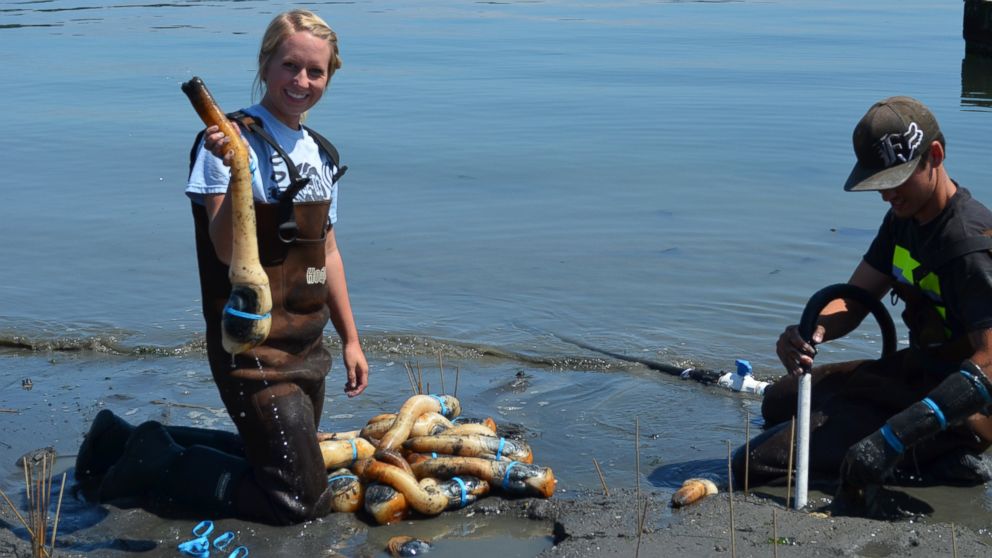U.S.-Grown Phallic Mollusk Banned In China
A Chinese import ban is costing shellfish producers millions.

March 20, 2014 -- They may look peculiar, but geoducks—giant bivalves that hail from West Coast waters—are a delicacy in Asia. Ordinarily, U.S. shellfish growers export them by the millions of pounds—and tens of millions of dollars—every year. Except this year.
An import ban by China has temporarily torpedoed the trade. Now a U.S. delegation will head to China this week to plead the clams' case.
U.S. officials meet with China on shellfish ban
They are extraordinary by any measure: The biggest weigh 16 pounds. The oldest live up to 160 years. Unlike lesser clams, whose puny bodies can be contained discreetly their shells, the big bruisers exceed their shells' dimensions. To protect themselves from their two predators (man and sea otters), they burrow deep into the seabed. To get oxygen and nutrients, they project a three-foot neck-like siphon up into the water.
Bill Dewey, spokesman for Taylor Shellfish Farms in Shelton, Washington, says that absent the import ban, Taylor would be exporting 40,000 to 50,000 pounds of geoducks a year to China, plus 5,000 to 10,000 dozen oysters a month. About half of Taylor's goeducks are sold domestically, ether to restaurants in the Seattle area or to Chinatowns in cities around the U.S.
In November, Chinese officials reported they had detected inorganic arsenic in some Puget Sound geoducks. In December, China banned all imports of bivalve shellfish harvested in the Sound and other Northwest waters.
Michelle Obama heads for China on Wednesday
"We have arsenic in our geology here in the Northwest," says Dewey, "along with other minerals. The bulk of it is organic and not harmful. A small percent is inorganic and can have chronic health implications. The state of Washington has looked into this and concluded the presence of arsenic is not a public health risk; it's not a concern."
Reason: most of the inorganic arsenic is concentrated in the outer skin of the mollusk's siphon, which, says Dewey, most people remove before eating.
"You cut the meat out of the shell, you boil it, you peel off the siphon. Then you prepare the meat, which is pretty pristine." The meat can be served as sashimi, or used as an ingredient in a traditional Chinese hot pot (stew).
"Only if you include the skin does arsenic exceed the Chinese standard," Dewey says. It's unclear to U.S. producers, he says, what Chinese consumers do with the siphon—whether they remove the skin or not. "We have to get that sorted out. Maybe we can resolve this by including some kind of label that says not to eat the skin."
A look at the First Lady's China itinerary
To address that and other issues, U.S. officials will go to China this week, in an effort to get the geographic scope of the ban narrowed or to get the ban lifted altogether. A spokeswoman for the National Oceanic and Atmospheric Administration (NOAA), which is representing U.S. shellfish producers, says Chinese officials have agreed to meet on Friday.
So far China's ban, says Dewey, is the only such restriction in the world. U.S. geoduck producers are continuing to sell to all the rest of Asia and to the U.S. domestic market.




